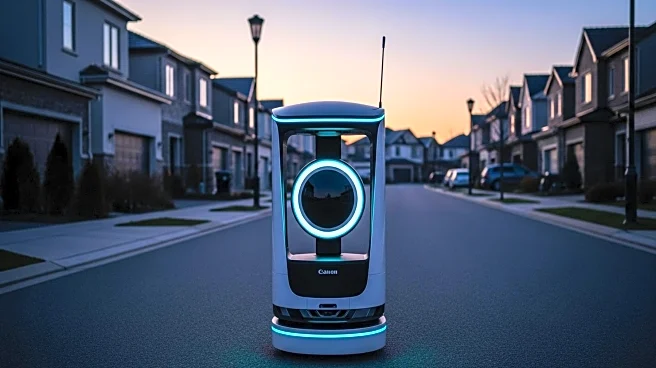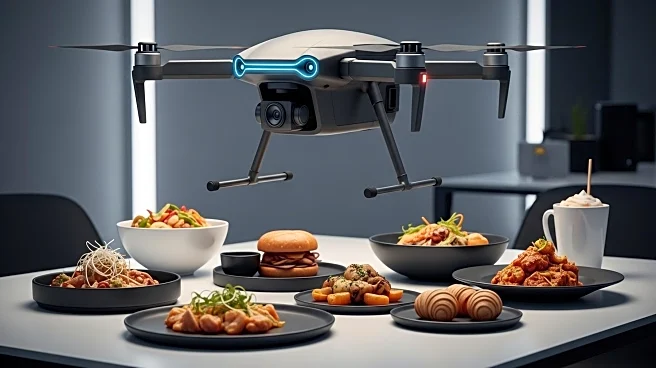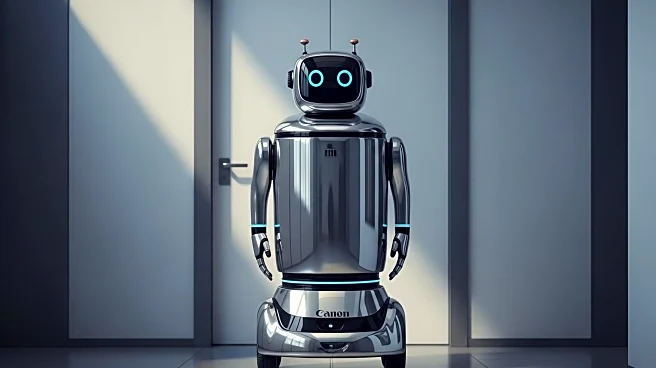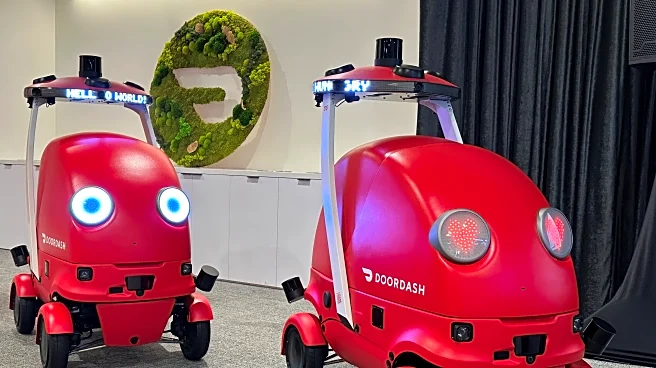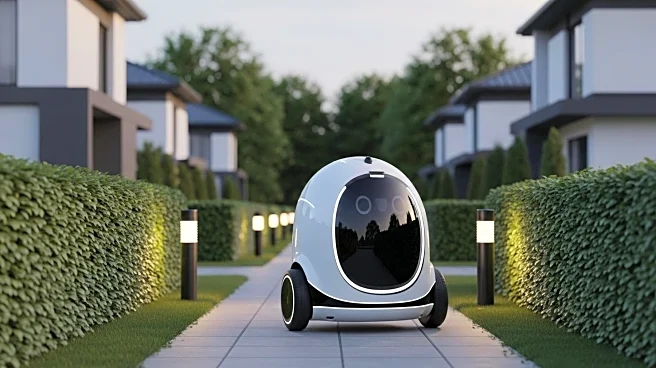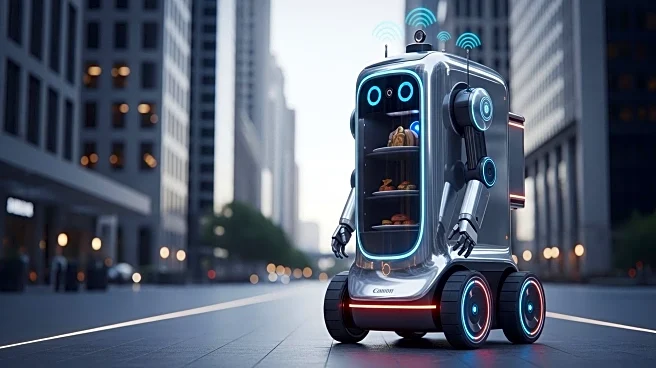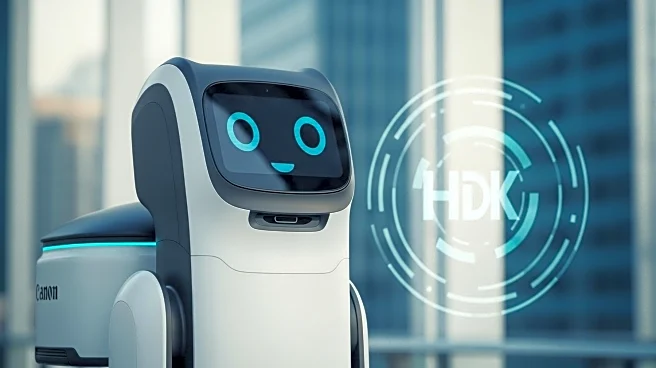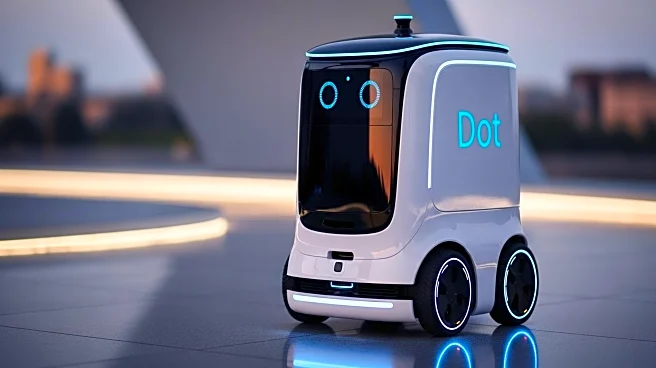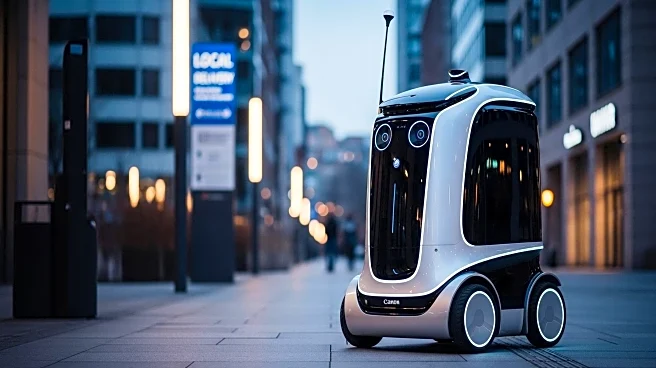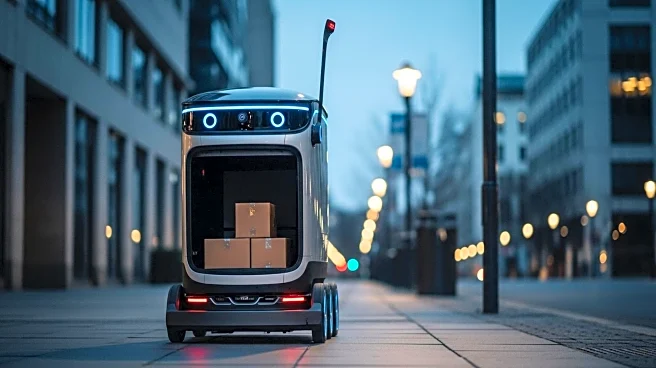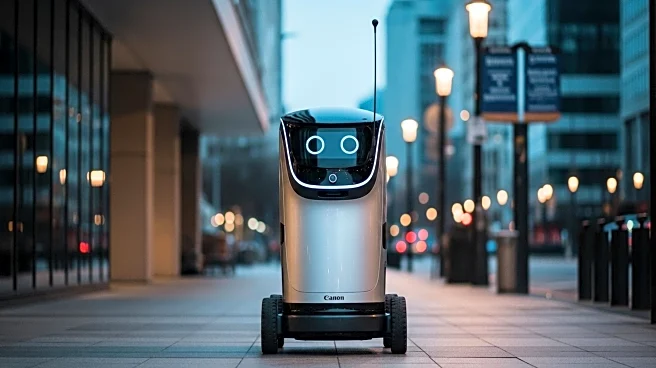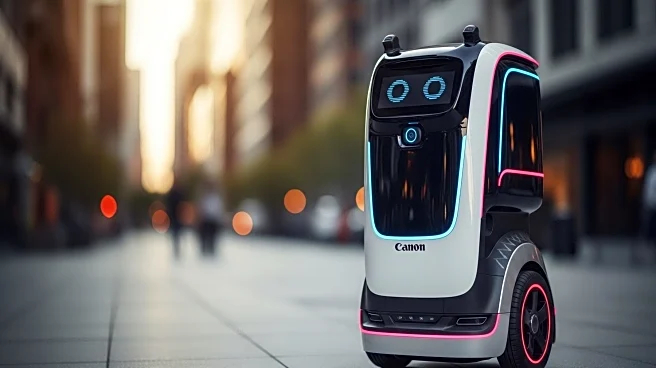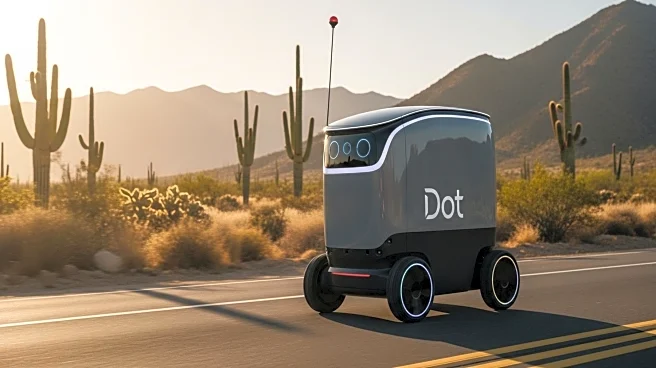What is the story about?
What's Happening?
DoorDash has introduced its first autonomous delivery robot, Dot, designed to operate in suburban areas. Dot is capable of navigating bike lanes, roads, sidewalks, and driveways, reaching speeds of up to 20 mph. The robot, which weighs 350 pounds and stands 4½ feet tall, can carry up to 30 pounds of deliveries in its modular cargo space. Dot is currently operational in the greater Phoenix area, where it has received regulatory approval. DoorDash is seeking approval to expand Dot's operations to other cities, with potential areas including the Bay Area, Denver, and Dallas. The company aims to integrate Dot into its existing delivery infrastructure, offering a hybrid model of human and autonomous delivery workers.
Why It's Important?
The introduction of Dot represents a significant advancement in autonomous delivery technology, potentially transforming the logistics industry. By reducing reliance on human drivers, DoorDash could lower operational costs and increase delivery efficiency. This move may also contribute to reduced traffic congestion and emissions, aligning with environmental sustainability goals. However, the deployment of delivery robots raises questions about their impact on local communities, including potential interference with cyclists and emergency responders. The success of Dot could influence other companies to adopt similar technologies, accelerating the shift towards automation in delivery services.
What's Next?
DoorDash plans to expand Dot's operations beyond Phoenix, pending regulatory approvals in other cities. The company is in discussions to introduce Dot in areas with dense suburban populations, such as the Bay Area, Denver, and Dallas. As DoorDash continues to develop its autonomous delivery platform, the balance between human and robot deliveries will be crucial. The company aims to optimize delivery methods based on speed, cost, and location, potentially increasing the role of robots in its delivery network. Community reactions and regulatory challenges will play a significant role in shaping the future deployment of Dot.
Beyond the Headlines
The deployment of Dot highlights broader ethical and societal considerations surrounding automation. As robots increasingly take on roles traditionally held by humans, questions about job displacement and the future of work arise. Additionally, the presence of autonomous machines in public spaces may lead to new legal and safety challenges, requiring updated regulations and community engagement. The integration of robots into daily life could also influence cultural perceptions of technology and its role in society.
AI Generated Content
Do you find this article useful?
